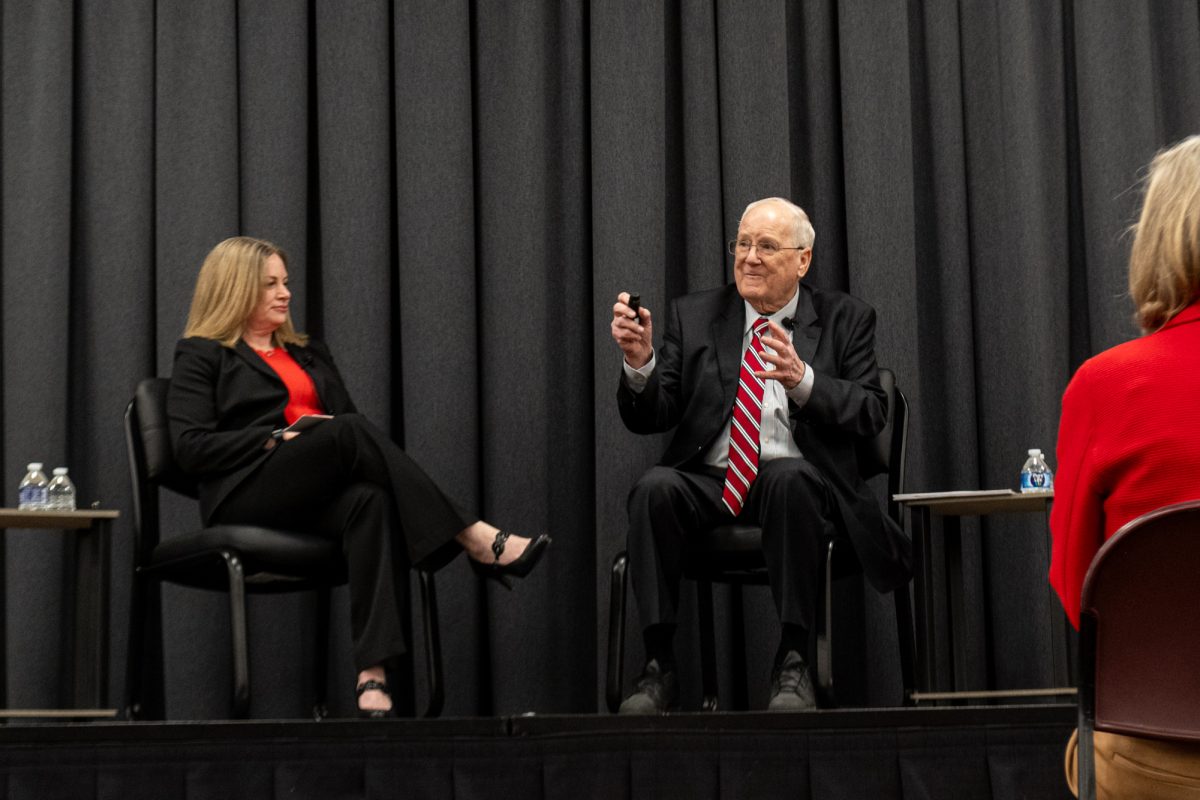Notebook: ISU volleyball adjusts to new blocking strategy
Freshman outside hitter and middle blocker Alexis Conaway taps the ball past the waiting opposition during a set against Northern Illinois in the Iowa State Challenge on Sept. 6. The Cyclones defeated the Huskies in three straight sets.
September 9, 2014
Christy Johnson-Lynch has said it before and she’ll say it again: “This team needs to be a good blocking team.”
It’s something the Cyclones have struggled with the past few seasons, but it has not always been that way under Johnson-Lynch. In her tenure as head coach, her teams have registered the top three team, single-match blocking totals in program history.
“It’s been really frustrating because up until a few years ago, we had put up really nice numbers,” Johnson-Lynch said. “We changed our system and I think maybe we tried to fix what wasn’t broken.”
Iowa State’s old defensive method used a swing block technique. In that style, the blockers pinched toward the middle of the court and would swing their arms to block an attack.
The Cyclones have since transitioned to a stationary block style, in which the front row players constantly adjust to where they anticipate the opponent will attack. From there, it’s a matter of putting the hands high and jumping straight up.
“It’s a little simpler, I think,” Johnson-Lynch said. “It’s probably something I’m better coaching and more comfortable with … I think simplifying it has helped us.”
The new system may be finally paying off for Iowa State. After tallying nine total blocks in the season’s first three matches, the Cyclones had 19 in the last two.
“Our set-up has gotten a lot better and I think the middles are doing a great job closing,” said outside hitter Mackenzie Bigbee, who had five block assists to go with a solo block in the Iowa State Challenge. “Christy’s really been telling [Alexis Conaway] she’s got to work to establish getting over early and she’s done a great job executing that.”
The numbers are a step in the right direction, but there’s work still to be done.
“The end result, the number of blocks we had per match the last two matches, was really good to see,” Johnson-Lynch said. “I still think we’ve got a ton of room for improvement. If you look at the stats, Conaway and [Victoria] Hurtt and Bigbee were largely responsible for those. We’ve got the other half to continue to work on, but I see lots of potential there.”
Snack time
Among the new legislation passed by the NCAA this year is a measure allowing unlimited meals and snacks to both scholarship and walk-on athletes alike.
The rule, passed in April, came to fruition after Shabazz Napier, former Connecticut guard and 2014 Final Four most outstanding player, said in an interview that some nights he would go to bed “starving” because he could not afford to buy food.
Though Johnson-Lynch said the ISU volleyball program has not had that type of issue in the past, the rule has its place in the program.
“I think that’s a pretty tremendous thing for [the walk-ons],” Johnson-Lynch said. “They work very hard for not a lot. Our players are not looking to add another thousand calories to their diets. They’re not looking to [eat] another time. I feel like we use it the way it’s supposed to be used.
“[But] they’re up for any extra benefit or additional benefits they can reap.”






